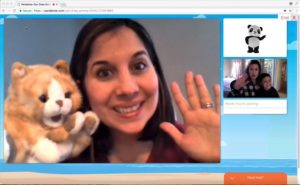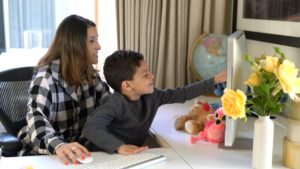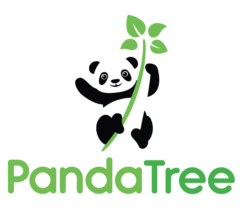Singing, playing, laughing. All things we as adults take for granted – especially when it comes to learning a foreign language! When prepping for an upcoming trip abroad, or, even harder, when studying up on cultural customs of a nation we need to visit for work, learning a foreign language can be a daunting task for us older folks.
Not so for our little ones however.
Instead of memorization, foreign language learning is an organic process that incorporates kids’ real lives — their toys, the animals they love, the letters and numbers that shape the world around them. Children are seemingly able to absorb a second language naturally without all the arduous study an adult might have to undertake.
A recent study published in the journal Cognition, which surveyed 669,498 native and non-native English speakers, found that this so-called “critical period” of language learning may last all the way up to the age of 17, but that for kids to really become fluent in a second language, they need to get started sometime before the age of ten or 12.

It’s not clear exactly why kids are such able learners when they’re young, but we do know that their neural plasticity, unselfconsciousness, and natural inclination to learn through play make a huge difference. Here are some of the ways that children’s language learning differs from adults—and how we might take a few cues from them!
Kids Learn by Organic Acquisition
According to researchers, babies are born with the ability to understand the sounds and nuances of any language in the world. As they grow, they adapt to, and become specialized in, whichever sounds they hear most. This combination of sounds typically comprises their native language (or more than one if a child is exposed to two languages from birth). Rather than fight for dominance inside the child’s mind, their brains naturally rewire to accommodate both sets of sounds, words and dialects.
This ability is underscored by the fact that kids who are at play learn how to understand their activity and then match words to that activity, rather than the other way around. As they become engrossed in their game, or their project, they want to figure out a way to explain it or move the activity forwards. For that, they need language.
Through Play, Kids Are Naturally Motivated
For young learners, few tools are as useful as play. Games and make-believe come naturally to kids; they engage effortlessly in these activities and in having fun with their peers and teachers.

Unlike adults, who are extrinsically motivated—they may want to learn a new language for the sake of creating better job opportunities or more engaging travel—kids aren’t thinking ahead to getting into college or expanding their future resumes. They want, and need, to enjoy the task at hand.
Animals and Counting and Trains, Oh My!
With adult language learners, curriculum often focuses on hard-and-fast vocabulary that will help them get by in a foreign country; how to pay the check in a restaurant, how to hail a cab, how to ask for the bathroom.
With young kids, on the other hand, we start by teaching them the names of animals, what to call their favorite toys, and how to count. These words and sentences allow them to focus on what they want and what interests them, thereby creating a pressure-free environment in which they can learn.
Context Is Everything
Just as adults are motivated to learn a new language with a specific goal in mind—no one wants to find themselves in a foreign country and unable to locate the restroom—kids are motivated to learn a new language when they are immersed in the world of an activity. That’s why context is everything; the right activity will allow children to submerge into the moment and get into the flow of learning.
We started PandaTree in 2015 knowing that parents needed more options for foreign language learning to give their kids a head start in a globally connected world, and the newest addition to our family, PandaTree for Preschoolers, was developed in response to parents who know about the benefits of starting young and are looking for foreign language exposure for their toddlers.
Through a series of ten, 25-minute lessons led by expert tutors online, kids (accompanied by a parent or adult caregiver) will be exposed to Spanish or Mandarin Chinese through counting, animals, colors, parts of the face and more – all scheduled at times that are convenient for parents – no driving necessary!
We’re excited to offer this program to our youngest users (between 2 and 5), and can’t wait to make their first foray into a foreign language a fun and joyful one!
